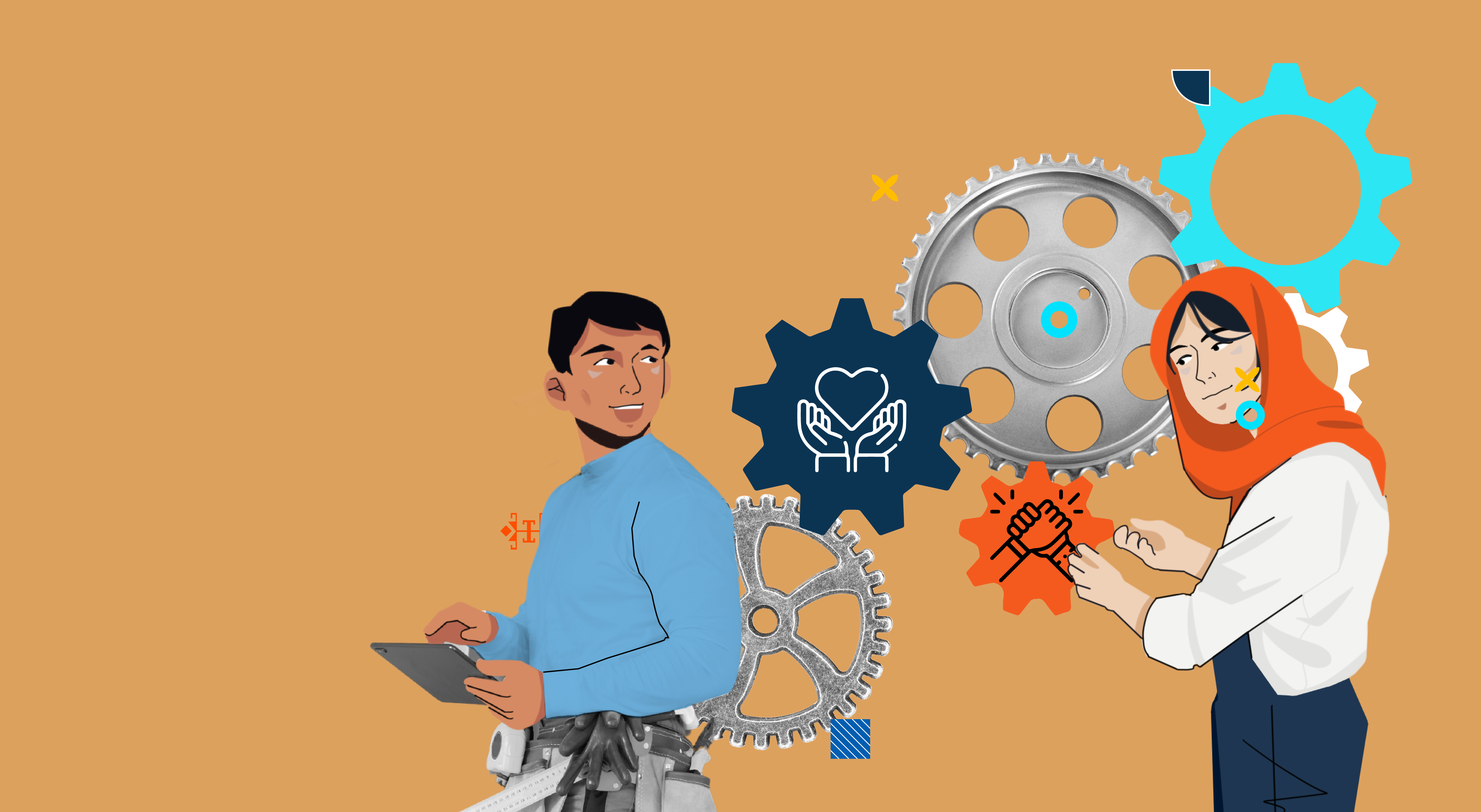We have previously discussed why gender matters in P/CVE and the role women play in conflict. This time we will discuss the roles of men and women in violent extremism. To have balance and equal perspectives inside P/CVE work, we need equal representation from men and women to contribute to peacebuilding efforts. Therefore, understanding masculinity in conflict and peacebuilding through a gender analysis lens is essential to achieve better peace both within the region and globally.
Masculinity refers to values associated with men and boys, and femininity refers to values associated with women and girls (Wright & Welsh, 2014). However, with masculinity comes an expectation of manhood derived from various sources of identity not limited to race, ethnicity, class, and (dis) ability, which is described as hegemonic masculinity (Connell, 1995). This hegemonic masculinity also affects how people approach P/CVE, which was dominated by militarised masculine ways of thinking in its early stages of operation.
This way of thinking also happens inside violent extremist groups that rely heavily on the role of men as protectors and pride of the nation or community. Thus to address this issue, the UNSCR Resolution 1325 of the women, peace, and security (WPS) agenda was created to endorse equal involvement of men and women in creating P/CVE programs. The framework is proposed because hegemonic masculinity and the lack of gender analysis have caused conflict to be prolonged. There are two reasons why it is important to understand masculinity and its impact on peace. First, men often become violent because they can not meet the militarised expectations of hegemonic masculinity (Edström et al., 2015). Second, women becoming violent is often because of their male partner’s influence.
This idea is exacerbated by the evidence in Indonesian media reports on women in violent extremism attacks that labels women with the term ‘suicide bomber brides,’ which creates the misperception that they become violent because of marriage link rather than their own ideological sense (Hanifah, 2021). Women can fill roles in P/CVE that might have been previously exclusive to men, such as supporting, directive, networking, and representation roles (Jordan, 2003). Evidence in Mindanao proves that women already occupy roles in both national and local initiatives, working to increase trust among Muslim and Christian communities (Beza et al., 2017).
Nevertheless, the recommendations for the WPS agenda in PCVE should not just incorporate men’s and women’s representation. We need to include the analysis of masculinity and its social context related to conflict and peacebuilding efforts. Because by understanding the masculine context in violent extremist groups and formulating P/CVE programs that use a gender lens, we can create initiatives that can pave the way for positive peace in the region (Wright & Welsh, 2014).
References:
- Beza, B. B., Johnson, M., & Fuentes, A. S. (2017). Women and their roles in peace building in conflict-vulnerable areas of Mindanao, Philippines. Community Engagement in Post-Disaster Recovery, 131–144. https://doi.org/10.4324/9781315534213-10
- Brown, K. E., Duriesmith, D., Rahman, F., & True, J. (2020). Conflicting identities: The Nexus between masculinities, femininities and violent extremism in Asia. UNDP.
- Browne, K. E. (2020). Gender, religion, extremism: Finding women in anti-radicalization. Oxford University Press.
- Connell, R. W. (1995). Masculinities. Polity Press.
- Edström, J., Hassink, A., Shahrokh, T., & Stern, E. (2015). Emerge engendering men: A collaborative review of evidence on men and boys in Social Change and gender equality. Institute of Development Studies.
- Hanifah, H. (2021). Gendering CVE in Indonesia. New Security Challenges, 177–194. https://doi.org/10.1007/978-981-16-2032-4_8
- Roose, J. M., Flood, M., Greig, A., Alfano, M., & Copland, S. (2022). Masculinity and violent extremism. Palgrave Macmillan Ltd.
- Wright, H., & Welsh, P. (2014). Masculinities, conflict, and peacebuilding: Perspectives on men through a gender lens. Saferworld.

